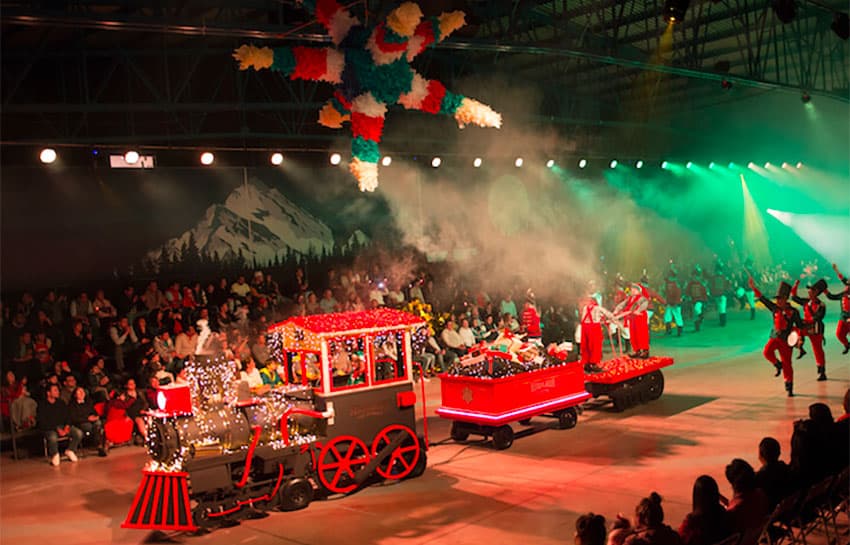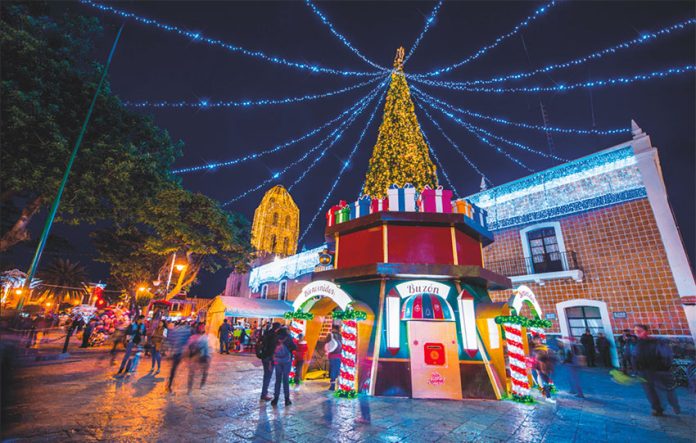A Christmas village in Puebla may be the closest thing to a northern Christmas that exists in Mexico.
From late November to early January, the city of Atlixco boasts the largest arrangement of colored lights in Mexico at an event called the Villa Iluminada (Lighted Village).
The historic center of the city, from the main square to Parque Revolución, boasts millions of Christmas lights strung up on over two kilometers of old buildings public and private, plazas and streets. Many of the lights are set up on over 2,000 figures related to the Christmas season.
In addition, the event includes attractions not necessarily related to Christmas as those from the north know it. One is the Árbol de los Deseos (Wish Tree) where you can leave messages about what you would like for Christmas, a lava tunnel and a train. It even includes a Corner for Lovers, a backdrop for professing your undying affection to that special someone.
One of the highlights of this period is the Desfile de Nikolaus (Nicholas Parade), based on a variant of the Saint Nicholas story. In this version, a young girl was playing with a box when Nicholas, a neighbor, saw her through the window and was curious. He asked her what she was doing with the box and she said, “Playing with my doll.” But the box was empty.

The girl also told him that the Three Wise Men could not bring gifts to all children and she was one who did not receive a gift. So she gave herself an imaginary doll.
The next day, the girl opened her box to find a real doll, a gift from Saint Nick. The parade to honor this legend features floats and people in costume and marching bands.
Another major attraction is the Magic Circus, which is new this year.
There is an entrance fee for the parade of between 165 and 270 pesos, but it includes access to a pavilion featuring local and gourmet food. However, the walk around the lighted area is free.
After only seven years, the event is the most important tourist attraction for the municipality, and is expected to bring in over 50 million pesos (US $2.57 million).
This year’s event runs from November 22 to January 6.
More information can be found on the event’s website (in Spanish).
Source: El Universal (sp), El Sol de Puebla (sp)
